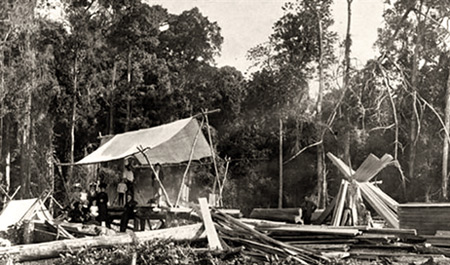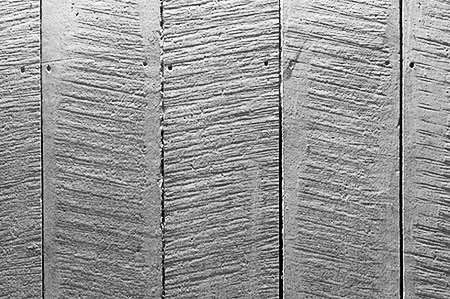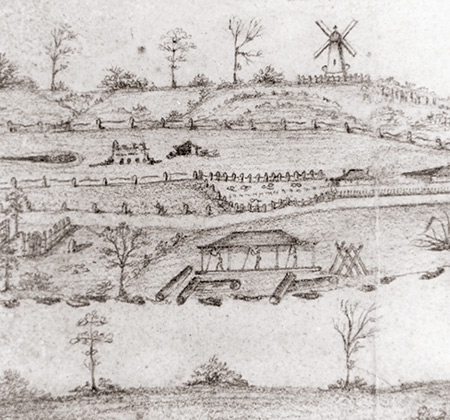Marking time in September 2012
A sawyer’s no robber
I have been working on a project at Fairview, a farm house near Maleny. The house was built around 1907 for Emily and John Robert Pattemore by their four sons. They felled the trees (with an axe and cross-cut saw), cut the logs to length (with a cross-cut saw), ripped them into boards (with a pit-saw), seasoned the boards (stacked criss-cross on a trestle), then planed and moulded the boards (with hand planes). Then they built the house in the usual way. It adds up to a vast amount of hand labour. That’s the bad news.
Now the good news. In the scrub—soon to be cleared to make way for cattle pasture—were enough white beech trees to build the house. White beech (gmelina leichhardtii) is a rainforest hardwood that saws easily, and is buttery smooth to plane by hand. The old timber handbooks recommended it for planking boats, for pattern-making, and called it the premier carving timber in Queensland.

This represents the end of pit-sawing in south-east Queensland. Machine saw-mills, powered by steam engines, were already established nearby. So it’s slightly surprising that the house was built in such a laborious way.
Raphael Salaman describes the sawyer’s work like this:
After felling, the log was hewn on two sides so that it would lie firmly. … The planks were set out by ‘snapping’ a chalked line along the top and then plumbed down each end; the log was then turned over and lined out on the other side in the same way. To avoid waste it was important for each sawyer to follow this guide line very closely. One of their rhymes defends the sawyer who fails to do so:
‘A sawyer’s no robber—
What he takes from one side he gives to the other.’
The top sawyer guides the cut with the upper handle (the Tiller) while standing on the trunk. The bottom sawyer holds the lower handle (the Box) which can be removed when it is necessary to take the saw out of the kerf.
I’m quoting from Salaman’s wonderful 1974 Dictionary of tools, in which he also writes about the pit in the pit saw:
According to W L Goodman, the saw pit is a relatively modern device. From evidence so far available, it seems that pit-sawing was common in England and Denmark, at least from the seventeenth century onwards, but although pits were used in other parts of Europe, for example in north-west Germany and Belgium, the normal practice on the Continent, from Roman times until the advent of machinery, was to support the log on trestles above ground. This method survives in Africa and Asia.
I have already mentioned the Japanese sawyers featured in a woodcut by Katsushika Hokusai.

If this photograph of Fairview marks the end of pit-sawing in south east Queensland, the beginning is marked by a small detail in a drawing of the Moreton Bay convict settlement 70 years earlier. We see three convicts working with pit-saws (and three more are out of sight at the bottom of the pit), beside the Brisbane River near the present site of North Quay. Note the logs waiting to be sawn, the stacks of sawn boards, the split post and rail fences, and the windmill at the top of the ridge.
